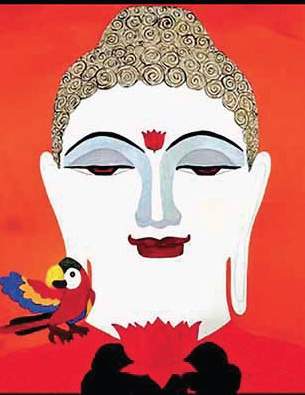Think wall and for some it just means a building structure, but, for artists, they see them as a huge canvas on which they can depict their art on. While some walls are used for graffiti, some are used for murals. And, it is not uncommon for many eating joints to incorporate this work of art in their building design.
Many eateries in Mangaluru have large walls dedicated to murals. Looking at them popping up across Mangaluru, shows that murals are trending here.
“Murals are colourful and popular. I have painted over a 1,000 murals all over the State in varied establishments, homes, hotels, eateries, commercial places and educational institutions too. They can also be based on a theme. The ones that get most appreciated are those that depict anything to do with a traditional Indian Kitchen. I have created many themes for different Udupi hotels in Bengaluru, Mangaluru, Mysuru, Pune, Kadaba (Andhra Pradesh) and Nepal. People normally pause, admire the work and even take a selfie with it before moving on,” observes VG Hegde, an artist and entrepreneur from Bengaluru.
The mural, adorning a wall at Sri Krishna Vilas in Urva Stores in Mangaluru, shows a typical kitchen in a hotel run by a Brahmin family. “This particular mural gives us a glimpse of an ancient Indian kitchen. It also takes us on a nostalgic trip, to the era when firewood was used for cooking.” says Vaishak Bhat, a techie from US on a visit to Mangaluru.
“Not just hotels in Mangaluru, but those in Bengaluru too have added murals to their structures. Many opt for thematic murals based on Udupi Krishna or vegetarian food. The best part is they dedicate a prominent place in their hotels for this work of art,” shares Lakshmish Shanbhag, an architect.
It is not just vegetarian eateries but even fast food joints have murals in their dining areas, says John Chandran, a mural specialist from Mangaluru. He has created a mural of cricketers for a non-veg outlet and a mural of a mother cooking for her family for St Aloysius Museum (Aloysium).
Vikram Shetty, an upcoming artist is passionate about murals,. In fact, his works can be seen in many eateries across the city.
“I have partnered with Ramakrishna Mission as an art consultant for their cleanliness campaign too,” beams the young man.
“There are many art forms that go into making a mural — graffiti art, caricature and doodles,” he explains.
According to senior art teacher Ganesh Somayaji, “Murals have now become an integral part of our lives.
“It is a welcome change and also a sign that artists today have another horizon to explore.”
source: http://www.thehindu.com / The Hindu / Home> Features> Metroplus / by M Raghuram / April 16th, 2019




